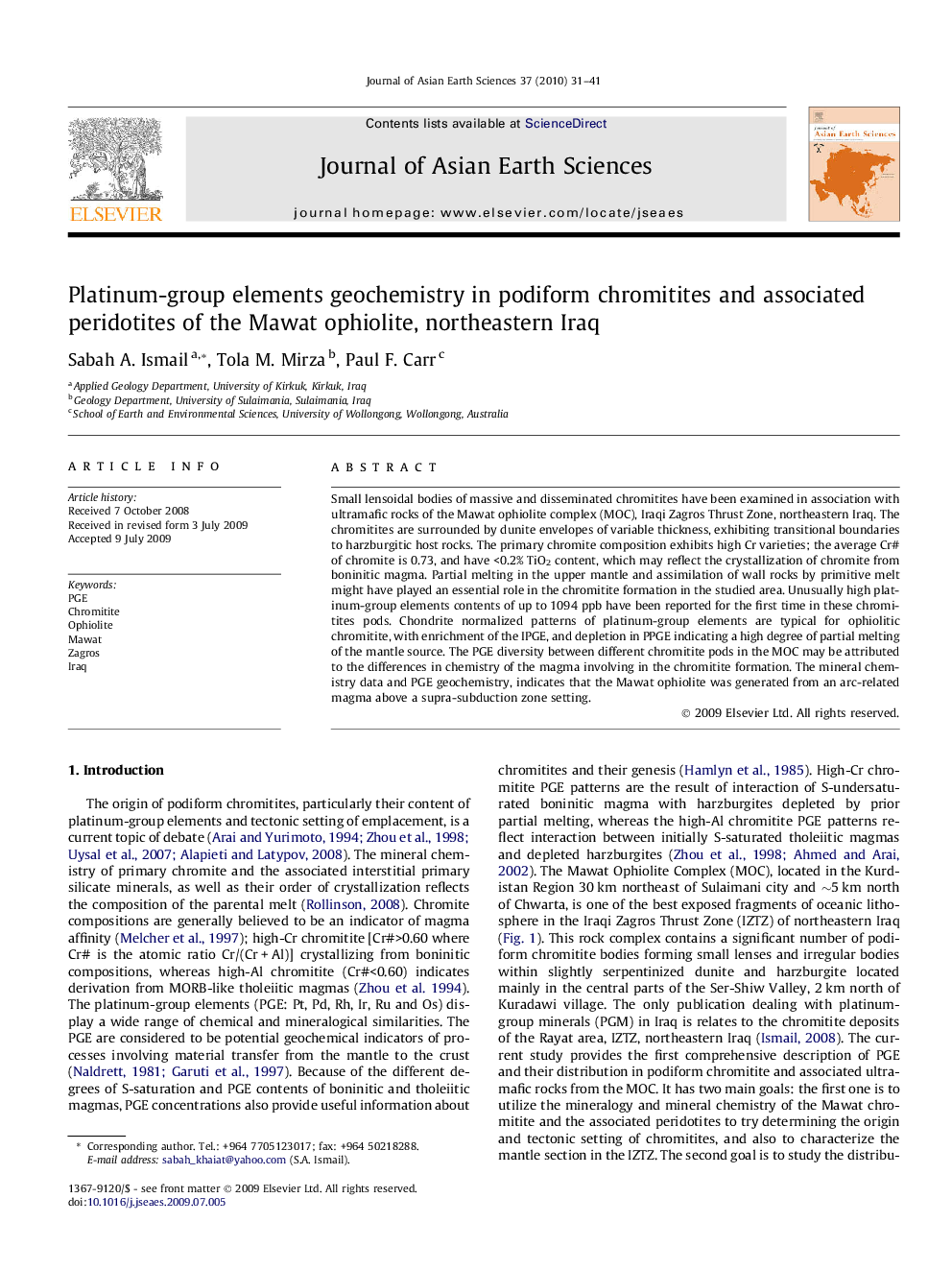| Article ID | Journal | Published Year | Pages | File Type |
|---|---|---|---|---|
| 4732147 | Journal of Asian Earth Sciences | 2010 | 11 Pages |
Small lensoidal bodies of massive and disseminated chromitites have been examined in association with ultramafic rocks of the Mawat ophiolite complex (MOC), Iraqi Zagros Thrust Zone, northeastern Iraq. The chromitites are surrounded by dunite envelopes of variable thickness, exhibiting transitional boundaries to harzburgitic host rocks. The primary chromite composition exhibits high Cr varieties; the average Cr# of chromite is 0.73, and have <0.2% TiO2 content, which may reflect the crystallization of chromite from boninitic magma. Partial melting in the upper mantle and assimilation of wall rocks by primitive melt might have played an essential role in the chromitite formation in the studied area. Unusually high platinum-group elements contents of up to 1094 ppb have been reported for the first time in these chromitites pods. Chondrite normalized patterns of platinum-group elements are typical for ophiolitic chromitite, with enrichment of the IPGE, and depletion in PPGE indicating a high degree of partial melting of the mantle source. The PGE diversity between different chromitite pods in the MOC may be attributed to the differences in chemistry of the magma involving in the chromitite formation. The mineral chemistry data and PGE geochemistry, indicates that the Mawat ophiolite was generated from an arc-related magma above a supra-subduction zone setting.
